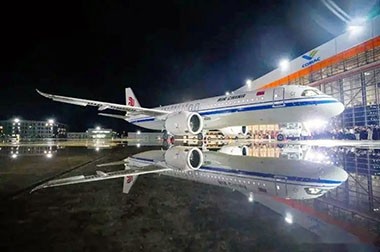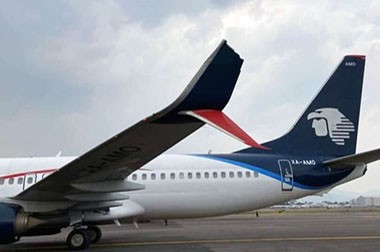2014 aluminum vs 7075
2014 aluminum alloy has good machinability and moderate strength, making it suitable for durable applications, while 7075 aluminum alloy offers higher strength and fatigue resistance, making it ideal for high-pressure and high-load environments.

Comparison Table of Advantages and Disadvantages between 2014 and 7075 Aluminum Alloys
Advantages Comparison Table of 2014 and 7075 Aluminum Alloys
| Property | 2014 Aluminum Alloy | 7075 Aluminum Alloy |
| High Strength | High strength, suitable for applications requiring durability. | Excellent strength, suitable for high-pressure and high-load environments. |
| Machinability | Good machinability, suitable for machining complex shapes and fine craftsmanship. | Difficult to machine, but due to its excellent hardness and strength, it is used in demanding applications. |
| Heat Treatment Performance | Retains good strength after heat treatment, suitable for aerospace and military applications. | Excellent strength and fatigue resistance after heat treatment, suitable for high-strength structural components. |
| Fatigue Resistance | Moderate fatigue resistance, suitable for applications requiring durability. | Excellent fatigue resistance, suitable for long-term applications under high stress. |
| Hardness | Moderate hardness, suitable for applications requiring moderate wear resistance and high strength. | High hardness, effectively resists wear and surface damage, suitable for harsh environments. |
Disadvantages Comparison Table of 2014 and 7075 Aluminum Alloys
| Property | 2014 Aluminum Alloy | 7075 Aluminum Alloy |
| Corrosion Resistance | Poor corrosion resistance, requires additional protective measures (such as coating or cladding). | Poor corrosion resistance, usually requires additional coating or cladding to improve corrosion resistance. |
| Weldability | Difficult to weld, prone to cracking, requires special processing. | Difficult to weld, prone to cracking, requires special processes and controls during welding. |
| Machining Difficulty | Easier to machine, suitable for manufacturing complex machined parts. | More difficult to machine, requires special tools and techniques, increasing manufacturing costs. |
| Thermal Conductivity | Good thermal conductivity, suitable for applications with high heat dissipation requirements. | Lower thermal conductivity, higher strength and hardness make heat dissipation management more complex. |
2014 vs 7075 Aluminium Alloy Composition and Processing
- 2014 Aluminium: Part of the 2000 series (aluminum-copper alloy). Primarily alloyed with copper (4.4%) along with silicon, manganese, and magnesium. Known for high strength but poorer corrosion resistance.
- 7075 Aluminium: Part of the 7000 series (aluminum-zinc alloy). Alloyed with zinc (5.6%), magnesium, and copper. Known as one of the strongest aluminum alloys available.
As part of the 2000 series, 2014 is primarily an aluminum-copper alloy (Cu content typically around 4–5%) with small amounts of manganese and silicon.
It is commonly used for forging and is well known in traditional aerospace applications. Its processing history (e.g., forging followed by heat treatment to T6) gives it a unique set of mechanical properties.
As part of the 7000 series, 7075 contains zinc (typically 5.1–6.1%) as its main alloying element, along with magnesium (2.1–2.9%) and small amounts of copper (1.2–2.0%).
Its composition gives it one of the highest strengths among aluminum alloys, typically used in applications requiring extremely high strength-to-weight ratios, such as aircraft structural components and bicycle frames.
2014 vs 7075 Aluminium Alloy Mechanical Properties
2014 vs 7075 Aluminium Alloy Strength
In typical T6 condition, 7075 is usually slightly stronger than 2014. However, specific heat treatment and processing conditions may alter these figures; in some cases, well-forged 2014 may approach or even exceed certain grades of 7075.
2014 vs 7075 Aluminium Alloy Stiffness and Fatigue
Their fatigue performance and resistance to stress corrosion cracking largely depend on processing. In certain applications (e.g., traditional ITM valve stems), the forging characteristics and fatigue behavior of 2014 are preferred, while in cases where stiffness is crucial, the additional strength of 7075 is more favored.
| Alloy | Tensile Strength | Yield Strength |
| 2014 Aluminium | 480-500 MPa (70,000-72,000 psi) | 420-440 MPa (61,000-64,000 psi) |
| 7075 Aluminium | 510-570 MPa (74,000-83,000 psi) | 430-500 MPa (63,000-73,000 psi) |
2014 vs 7075 Aluminium Alloy Corrosion Resistance
Compared to other series (e.g., 6000), both of these alloys have relatively poor corrosion resistance.
- 2014: Prone to stress corrosion cracking; typically requires protective coatings.
- 7075: Corrosion resistance is improved through T73 temper (sacrificing some strength for better corrosion performance).
2014 aluminum has good strength and machinability, but its corrosion resistance is average. However, compared to other high-strength alloys, it is less prone to stress corrosion cracking.
On the other hand, 7075 aluminum has better corrosion resistance, but it is more susceptible to stress corrosion cracking, especially in the T6 condition. Opting for the T7 condition can mitigate this issue, enhancing its durability in corrosive environments.
- Both 2014 and 7075 are prone to stress corrosion cracking. In many critical applications, surface treatments (such as cladding or anodizing) are used to improve corrosion resistance.
- 2014 is often clad (e.g., "Alclad 2014") to reduce its inherent sensitivity, while 7075 usually requires careful design to avoid environmental issues.
2014 vs 7075 Aluminium Alloy Machinability
- 2014: Excellent machinability in T4 temper, suitable for precision parts.
- 7075: Good machinability, but slightly lower than 2014 due to its higher strength and hardness.
2014 aluminum is softer and easier to machine and form. In contrast, 7075 aluminum is harder to machine and form, but it has extremely high strength, making it well-suited for non-welded, high-performance parts.
- 2014 is known for being forgeable, which may provide slightly easier machinability for some parts, which is why it has been used for certain bicycle handlebars.
- 7075, while extremely strong, may require more specialized methods to achieve optimal results during machining due to its higher demands on tools.
2014 vs 7075 Aluminium Alloy Weldability
Due to the risk of heat cracking, both of these alloys have poor weldability.
They are typically joined using mechanical fasteners or adhesives rather than welding.
2014 vs 7075 Aluminium Alloy Heat Treatment
Both can be heat treated (T6 temper maximizes strength).
7075-T73: A temper used to enhance corrosion resistance, but strength is reduced by about 10-15%.
2014 vs 7075 Aluminium Alloy Applications
- 2014: Used in aircraft structures, military hardware, and high-strength components where ease of machining is critical.
- 7075: Used in aerospace (e.g., aircraft fuselage, gears), high-performance automotive parts, and sporting equipment (e.g., bicycle frames, climbing gear).
When choosing between the two:
- If all factors (geometry, machining, heat treatment) are the same, 7075 is typically 10-18% stronger than 2014 in its common T6 condition.
- However, factors like ease of forging, traditional design, and specific machining or fatigue characteristics may lead some manufacturers or end-users to prefer 2014 for certain components.
2014 vs 7075 Aluminium Alloy Cost and Availability
- 7075: Typically more expensive due to its higher zinc content and stronger properties.
- 2014: More cost-effective for applications requiring medium strength and machinability.
Other Considerations
- Fatigue Resistance: 7075 has better fatigue performance in high-stress environments.
- Density: Both have similar densities (~2.8 g/cm³), so weight savings come from strength efficiency (e.g., thinner sections for 7075).
Both alloys require protective treatments in corrosive environments and are best suited for non-welded, high-performance applications.
- For applications prioritizing machinability, medium strength, and cost-effectiveness, choose 2014.
- When maximum strength and fatigue resistance are critical, choose 7075, accepting higher costs and corrosion management.
For applications where every gram counts, 7075 is often chosen for its maximum strength and stiffness.
2014, with its well-established forging qualities, sometimes better fatigue performance, and traditional use in parts like bicycle handlebars, is valued for its overall balance of performance.




